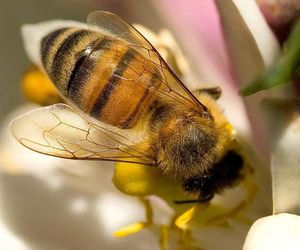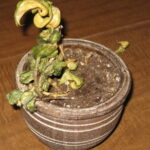Sedums may well be the most effort free plants around, and they give a lot in return. They have no insect pests except for the occasional slug. The deer and rabbits leave them alone. I’ve never seen any disease on them, even in the humid greenhouse. Once established, they are drought resistant. They will grow in any soil type, although they prefer one that is well drained. Bees and butterflies seem to love them, and a lot of them bloom late in summer/early in fall, when there are less flowers for those insects. The larger types make good cut flowers- they last forever in a vase and may even root there.
All sedums prefer full sun, but some can grow in part shade. The shorter types are better for shade growing; there are a few tall ones that can be grown there, but they get very floppy. To give some interest to the winter garden, the tall ones can be left with their dried blossoms on them. Cut them back in spring before the new growth starts. They are some of the cold hardiest plants around and can even be grown in containers outside in winter without harm. They prefer to have little fertilizer. They can be easily propagated by rooting stem cuttings- pieces that are dropped on the group frequently root! I’ve also grown sedum from seed- ‘Voodoo’ and S. acre are both very easy this way, and they are so cute at the tiny stage with their fleshy little leaves.
The only down side I see to these plants is that they don’t fit into all garden styles. They work well in casual and Southwestern style gardens, not so well in formal ones. They are the perfect plant for the rock garden. They’re borderline in English cottage styles because they tend to evoke a feeling of an arid place rather than a lush, humid one. But the short ones make wonderful groundcover, spreading slowly to fill the space, while the tall ones are great specimen plants. Because they are so carefree they are good in places where you don’t want to have to fuss over things, like along driveways or on steep banks.
Some of my favorites:
‘Matrona’- The 2000 Perennial of the Year, this 18-24″ clump former has large gray green leaves on burgundy stems. I love the color of this one- it’s like a storm cloud! The flower buds look like broccoli before they open into big, pink heads.
‘Autumn Joy’- Probably the best loved sedum around. 18-24″ tall, 24″ wide, with flower heads 6″ across, this is an all around stunner. The leaves are bluish green and the flowers start out light pink, turn salmon, and finally darken to russet in autumn. This one can take part shade. There are cultivars with different flower colors available.
‘Frosty Morn’- 24″ tall x 24″ wide, this one has variegated foliage that is light green and white. The flower buds are white and open into light pink stars like a handful of fireworks.
‘Black Jack’ – Another tall one, ‘Black Jack’ has deep burgundy, almost black foliage. It’s stunning! I’m a sucker for dark foliage, and I like this trend of dark sedums.
S. acre-Goldmoss stonecrop. Originally from Europe but naturalized in North America. This is a creeping groundcover in dry soil, even growing in masonry cracks. This is a yellow flowered spring bloomer that’s 1-2″ tall with tiny little leaves. This one looks delicate, but it’s a tough little survivor, thriving on the rocky slopes here in zone 4. It also makes a nice houseplant.
‘Voodoo’- one of the many S. spurium varieties. This one has dark burgundy leaves and stems when grown in full sun. 4″ tall with a spread of about 24″, this makes a dramatic groundcover.
‘Tri-Color’- another S. spurium. This one has leaves of light green, cream and pink. It’s a very soft pastel blend, although with the onset of cold weather in fall, the pastel pink turns an intense, shocking pink. I like it around taller plants that have darker green leaves but pastel flowers. 4″ x 24″, slower growing than ‘Voodoo’. It has light pink star shaped flowers.
“Dragons blood’- While not as big a seller as ‘Autumn Joy’, more people probably have this sedum in their garden. For a good many years, it was the free gift with purchase for a number of mail order nurseries. While no S. spurium is a slow grower, this one seems to be the fastest. This by no means makes it an undesirable plant. The foliage is dark green with red tints which turns bronze in fall. The blooms are a sharp pink/purple and seem to last forever.
While all these sedums- and most others- are hardy to Zone 4 and some to Zone 3, there are a few that are frost tender. ‘Donkeys tail’ (or frequently ‘Burros Tail’) makes a fine hanging houseplant with long trailing stems. I saw one once that had stems (‘tails’) almost 8′ long but that takes perfect siting, as the stems are very brittle and will break off at a light touch. Other tender sedums are good in small dish gardens along with cacti.
Sedums are probably the perfect plants for the low maintenance garden. They only need attention once a year- in very late fall or early spring to cut last season’s dead growth off. Leaving it until after new growth starts in spring makes it harder to get to it, especially in the lower growing varieties. In areas with water restrictions, they are excellent choices for your xeriscape without looking prickly. If you take cuttings every few weeks, you can cover a large area pretty fast with them. As a class of plants, sedums get an A+.





